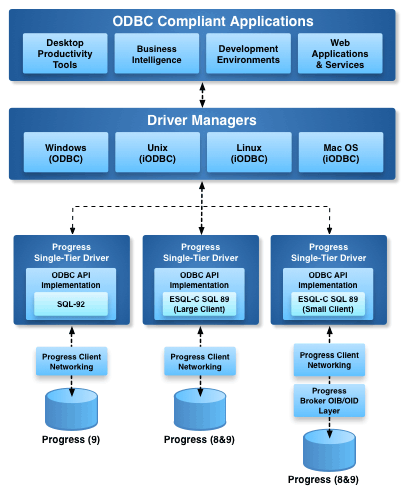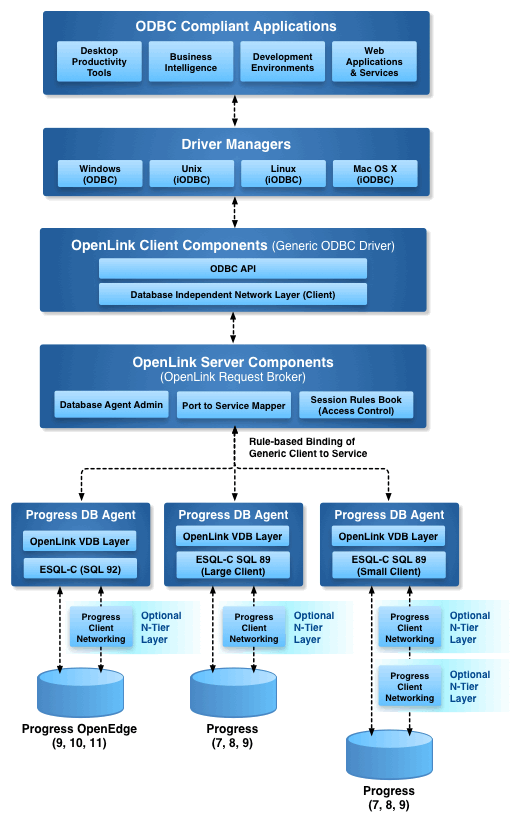This HTML5 document contains 950 embedded RDF statements represented using HTML+Microdata notation.
The embedded RDF content will be recognized by any processor of HTML5 Microdata.
| Prefix |
IRI |
| n243 |
http://data.openlinksw.com/oplweb/product/odbc-ingres-mt# |
| n132 |
http://data.openlinksw.com/oplweb/offer/Offer-2016-02-11-UDA-svr-03-linux-pro11# |
| n110 |
http://www.openlinksw.com/careers/ |
| n126 |
http://data.openlinksw.com/oplweb/offer/Offer-UDALT-WKSSVR-anyos-odbc-pro9-department-2016-08# |
| n67 |
https://uda.openlinksw.com/odbc/driver/Microsoft-SQL-Server/ |
| n258 |
http://data.openlinksw.com/oplweb/product/odbc-jdbc-bridge-mt# |
| n48 |
http://data.openlinksw.com/oplweb/opsys/i386-generic-freebsd5.4-32# |
| n112 |
http://data.openlinksw.com/oplweb/product_format/st# |
| n319 |
http://data.openlinksw.com/oplweb/opsys/i386-generic-sco3.2v5.0.5-32# |
| n208 |
http://data.openlinksw.com/oplweb/offer/Offer-2016-02-11-UDA-MT-WKS-7-20-linux-progress8# |
| n74 |
http://virtuoso.openlinksw.com/ |
| rdfs |
http://www.w3.org/2000/01/rdf-schema# |
| n232 |
http://data.openlinksw.com/oplweb/offer/Offer-2016-02-12-UDA-svr-05-win-pro8# |
| n43 |
http://data.openlinksw.com/oplweb/opsys/mips-sgi-irix6.5-64# |
| n320 |
http://data.openlinksw.com/oplweb/opsys/i386-generic-freebsd4.5-32# |
| n4 |
http://data.openlinksw.com/oplweb/product/odbc-progress-mt# |
| n292 |
http://data.openlinksw.com/oplweb/product/dotnet-odbc-mt# |
| n6 |
http://www.openlinksw.com/ |
| n15 |
http://uda.openlinksw.com/ |
| n172 |
https://shop.openlinksw.com/ |
| n13 |
http://data.openlinksw.com/oplweb/opsys/sparc-sun-solaris2.9-64# |
| n65 |
https://uda.openlinksw.com/odbc/driver/Informix/ |
| n198 |
http://data.openlinksw.com/oplweb/offer/Offer-2016-02-11-UDA-svr-anyos-bundle# |
| n237 |
http://data.openlinksw.com/oplweb/offer/Offer-2016-02-12-UDA-svr-03-linux-pro9# |
| n279 |
http://data.openlinksw.com/oplweb/product/dotnet-sybase-st# |
| n197 |
http://data.openlinksw.com/oplweb/product/odbc-informix-st# |
| n287 |
http://data.openlinksw.com/oplweb/product/dotnet-db2-mt# |
| n124 |
http://data.openlinksw.com/oplweb/license/JDBCGenericLinuxWKSRequestBrokerLicense-16cores-2016-02-11# |
| n337 |
http://data.openlinksw.com/oplweb/product/dotnet-mysql-mt# |
| n219 |
http://uda.openlinksw.com/offers/ |
| n335 |
http://data.openlinksw.com/oplweb/dbms_engine/pro73e# |
| n80 |
http://data.openlinksw.com/oplweb/offer/Offer-2016-02-11-UDA-MT-WKS-21-linux-oracle9# |
| n24 |
http://data.openlinksw.com/oplweb/dbms_engine/pro83a# |
| n241 |
http://data.openlinksw.com/oplweb/offer/Offer-2016-02-12-UDA-svr-03-linux-pro10# |
| n298 |
http://data.openlinksw.com/oplweb/opsys/sparc-sun-solaris2.8-64# |
| n290 |
http://data.openlinksw.com/oplweb/product/jdbc-odbc-mt# |
| n98 |
http://data.openlinksw.com/oplweb/product_feature/HyphenatedColumnNamesupport# |
| n207 |
http://data.openlinksw.com/oplweb/offer/Offer-2016-02-11-UDA-MT-WKS-7-20-linux-progress7# |
| n252 |
http://data.openlinksw.com/oplweb/product/odbc-postgres-mt# |
| n235 |
http://data.openlinksw.com/oplweb/offer/Offer-2016-02-12-UDA-03-linux-pro11# |
| n88 |
http://data.openlinksw.com/oplweb/offer/Offer-UDALT-WKSSVR-anyos-odbc-pro11-workgroup-2016-08# |
| n234 |
http://data.openlinksw.com/oplweb/offer/Offer-2016-02-12-UDA-03-linux-pro10# |
| n206 |
http://data.openlinksw.com/oplweb/offer/Offer-2016-02-11-UDA-svr-05-win-pro8# |
| n193 |
http://data.openlinksw.com/oplweb/offer/Offer-2016-02-11-UDA-MT-WKS-7-20-windows-progress7# |
| n173 |
http://data.openlinksw.com/oplweb/offer/Offer-2016-02-11-UDA-MT-WKS-20-windows-progress10# |
| n327 |
http://data.openlinksw.com/oplweb/dbms_engine/pro82c# |
| n47 |
http://data.openlinksw.com/oplweb/opsys/rs6000-ibm-aix4.3.3.0-32# |
| n77 |
http://data.openlinksw.com/oplweb/product/odbc-oracle-st# |
| n57 |
http://data.openlinksw.com/oplweb/product/dotnet-progress-mt# |
| n114 |
http://data.openlinksw.com/oplweb/product_feature/UDASessionRulesBook# |
| n161 |
http://data.openlinksw.com/oplweb/offer/Offer-2016-02-11-UDA-MT-20-linux-progress7# |
| n329 |
http://data.openlinksw.com/oplweb/dbms_engine/pro10# |
| n264 |
http://data.openlinksw.com/oplweb/opsys/universal-apple-macosx10.6-32# |
| n255 |
http://data.openlinksw.com/oplweb/dbms_engine/pro82a# |
| n134 |
http://data.openlinksw.com/oplweb/offer/Offer-2016-02-11-UDA-svr-03-linux-pro9# |
| n182 |
http://uda.openlinksw.com/images/ |
| n17 |
https://www.openlinksw.com/about/id/entity/http/www.openlinksw.com/data/turtle/general/ |
| n9 |
http://data.openlinksw.com/oplweb/product_release/UDAMultiTierEnterpriseEditionAnyDataAccessRelease6Progress# |
| n311 |
http://data.openlinksw.com/oplweb/opsys/rs6000-ibm-aix4.3.0.0-32# |
| n14 |
https://uda.openlinksw.com/odbc/driver/DB2/ |
| n174 |
http://data.openlinksw.com/oplweb/offer/Offer-2016-02-11-UDA-MT-WKS-20-windows-progress11# |
| n289 |
http://data.openlinksw.com/oplweb/product/dotnet-sqlserver-mt# |
| n113 |
http://data.openlinksw.com/oplweb/product_format/mt# |
| n70 |
http://data.openlinksw.com/oplweb/product_release/UDASingleTierLiteEditionODBCReleaseProgress# |
| n63 |
https://uda.openlinksw.com/odbc/driver/Progress/ |
| n136 |
http://data.openlinksw.com/oplweb/offer/Offer-2016-02-11-UDA-svr-03-linux-pro10# |
| n328 |
http://data.openlinksw.com/oplweb/dbms_engine/pro91a# |
| xhv |
http://www.w3.org/1999/xhtml/vocab# |
| n42 |
http://data.openlinksw.com/oplweb/opsys/powerpc-apple-macosx10.2-32# |
| n109 |
http://www.openlinksw.com/blogs/ |
| n190 |
http://data.openlinksw.com/oplweb/offer/Offer-2016-02-11-UDA-MT-WKS-7-20-windows-progress10# |
| n275 |
http://data.openlinksw.com/oplweb/product/dotnet-postgres-mt# |
| n19 |
http://data.openlinksw.com/oplweb/opsys/powerpc-ibm-aix5.3.0.0-32# |
| n334 |
http://data.openlinksw.com/oplweb/opsys/mips-sgi-irix6.5-o32# |
| n159 |
http://data.openlinksw.com/oplweb/offer/Offer-2016-02-11-UDA-MT-20-linux-progress10# |
| n71 |
https://www.openlinksw.com/about/id/entity/urn/mdata:websites:google: |
| n50 |
http://data.openlinksw.com/oplweb/opsys/i586-sco-sysv5uw7-32# |
| n221 |
http://data.openlinksw.com/oplweb/dbms_family/Progress# |
| n166 |
http://data.openlinksw.com/oplweb/offer/Offer-2016-02-11-UDA-03-linux-pro11# |
| n68 |
http://www.openlinksw.com/dataspace/organization/openlink# |
| n165 |
http://data.openlinksw.com/oplweb/offer/Offer-2016-02-11-UDA-03-linux-pro10# |
| n276 |
http://uda.openlinksw.com/data/turtle/multi-tier/2014/ |
| n41 |
https://uda.openlinksw.com/odbc/driver/ODBC/ |
| n128 |
http://www.w3.org/wiki/WebSchemas/SchemaDotOrgSources# |
| n195 |
http://data.openlinksw.com/oplweb/offer/Offer-2016-02-11-UDA-MT-WKS-7-20-windows-progress9# |
| n225 |
https://www.openlinksw.com/about/id/entity/urn/webdev: |
| n325 |
http://data.openlinksw.com/oplweb/dbms_engine/pro90b# |
| n244 |
http://data.openlinksw.com/oplweb/dbms_engine/pro90a# |
| n104 |
http://uda.openlinksw.com/odbc/ |
| n117 |
http://data.openlinksw.com/oplweb/product_feature/DatabaseIndependentNetworking# |
| n45 |
http://data.openlinksw.com/oplweb/opsys/rs6000-ibm-aix4.3.0.0-64# |
| n212 |
http://data.openlinksw.com/oplweb/product/odbc-sybase-mt# |
| n238 |
http://data.openlinksw.com/oplweb/offer/Offer-2016-02-12-UDA-svr-05-win-pro10# |
| n176 |
http://data.openlinksw.com/oplweb/offer/Offer-2016-02-11-UDA-MT-WKS-20-windows-progress8# |
| n222 |
http://data.openlinksw.com/oplweb/offer/Offer-2016-02-11-UDA-MT-WKS-anyos-anydaccess-progress# |
| n39 |
http://data.openlinksw.com/oplweb/opsys/x86_64-sun-solaris2.10-32# |
| n69 |
https://uda.openlinksw.com/odbc/driver/Sybase/ |
| n99 |
http://data.openlinksw.com/oplweb/product_feature/VersionIndependence# |
| n185 |
http://data.openlinksw.com/oplweb/offer/Offer-2016-02-11-UDA-MT-WKS-20-linux-progress11# |
| n75 |
https://www.openlinksw.com/about/id/entity/urn/ontology:semantic: |
| n152 |
http://data.openlinksw.com/oplweb/opsys_family/AIX# |
| n321 |
http://data.openlinksw.com/oplweb/opsys/i586-sco-sysv5uw7-32-nothreads# |
| n18 |
http://data.openlinksw.com/oplweb/product/odbc-progress-st# |
| n64 |
https://uda.openlinksw.com/odbc/driver/Ingres/ |
| n78 |
http://uda.openlinksw.com/oledb/ |
| n27 |
http://data.openlinksw.com/oplweb/opsys/universal-apple-macosx10.4-32# |
| n183 |
http://creativecommons.org/licenses/by/4.0/ |
| n11 |
http://data.openlinksw.com/oplweb/product/dotnet-informix-mt# |
| n213 |
http://data.openlinksw.com/oplweb/offer/Offer-2016-02-11-UDA-MT-7-20-linux-progress10# |
| oplsoft |
http://www.openlinksw.com/ontology/software# |
| n66 |
https://www.openlinksw.com/about/id/entity/urn/data:openlink: |
| n162 |
http://data.openlinksw.com/oplweb/offer/Offer-2016-02-11-UDA-MT-20-linux-progress8# |
| n151 |
http://data.openlinksw.com/oplweb/offer/Offer-2016-02-11-UDA-MT-20-windows-progress10# |
| n189 |
http://data.openlinksw.com/oplweb/offer/Offer-2016-02-11-UDA-MT-WKS-20-linux-progress8# |
| n160 |
http://data.openlinksw.com/oplweb/offer/Offer-2016-02-11-UDA-MT-20-linux-progress11# |
| n146 |
http://data.openlinksw.com/oplweb/opsys_family/FreeBSD# |
| n100 |
http://data.openlinksw.com/oplweb/product_feature/DistributedDatabaseSupport# |
| n261 |
http://data.openlinksw.com/oplweb/opsys/i686-apple-macosx10.6-32# |
| n82 |
http://uda.openlinksw.com/jdbc/ |
| n137 |
http://www.openlinksw.com/about/id/entity/http/data.openlinksw.com/oplweb/product/ |
| n296 |
http://data.openlinksw.com/oplweb/product/dotnet-ingres-mt# |
| n324 |
http://data.openlinksw.com/oplweb/opsys/sparc-sun-solaris2.10-32# |
| n236 |
http://data.openlinksw.com/oplweb/offer/Offer-2016-02-12-UDA-svr-03-linux-pro8# |
| n175 |
http://data.openlinksw.com/oplweb/offer/Offer-2016-02-11-UDA-MT-WKS-20-windows-progress7# |
| n202 |
http://data.openlinksw.com/oplweb/offer/Offer-2016-02-11-UDA-svr-05-win-pro10# |
| n52 |
http://data.openlinksw.com/oplweb/opsys/sparc-sun-solaris2.9-32# |
| n265 |
http://data.openlinksw.com/oplweb/product/odbc-postgres-st# |
| n233 |
http://data.openlinksw.com/oplweb/offer/Offer-2016-02-12-UDA-svr-05-win-pro9# |
| n96 |
https://www.openlinksw.com/about/id/entity/urn/opl:shop:offering:sponging:cache: |
| n333 |
http://data.openlinksw.com/oplweb/opsys/hppa1.1-hp-hpux11.11-32# |
| n56 |
http://data.openlinksw.com/oplweb/opsys/powerpc-apple-macosx10.4-32# |
| n30 |
http://data.openlinksw.com/oplweb/opsys_family/MacOSX# |
| n240 |
http://data.openlinksw.com/oplweb/offer/Offer-2016-02-12-UDA-svr-05-win-pro11# |
| n291 |
http://data.openlinksw.com/oplweb/product/jdbc-db2-mt# |
| n49 |
http://data.openlinksw.com/oplweb/opsys/hppa2.0w-hp-hpux11.11-64# |
| n260 |
http://data.openlinksw.com/oplweb/opsys/powerpc-apple-macosx10.5-64# |
| n306 |
http://data.openlinksw.com/oplweb/opsys/i686-apple-macosx10.5-32# |
| feat |
http://www.openlinksw.com/ontology/features# |
| n171 |
http://www.openlinksw.com/data/turtle/ |
| n148 |
http://data.openlinksw.com/oplweb/opsys_family/GenericLinux# |
| n87 |
http://data.openlinksw.com/oplweb/offer/Offer-UDALT-WKSSVR-anyos-odbc-pro10-workgroup-2016-08# |
| n316 |
http://data.openlinksw.com/oplweb/opsys/sparc-sun-solaris2.8-32# |
| n250 |
http://data.openlinksw.com/oplweb/offer/Offer-2016-02-12-UDA-05-win-pro8# |
| n277 |
http://data.openlinksw.com/oplweb/product/jdbc-sqlserver-mt# |
| n280 |
http://data.openlinksw.com/oplweb/offer/Offer-2016-02-12-UDA-anyos-odbc-pro# |
| n44 |
http://data.openlinksw.com/oplweb/opsys/powerpc-ibm-aix5.2.0.0-64# |
| n267 |
https://uda.openlinksw.com/jdbc/driver/ |
| n138 |
http://data.openlinksw.com/oplweb/opsys_family/MacOSClassic# |
| n211 |
http://ods.openlinksw.com:8889/about/id/http/schema.org/ |
| n103 |
http://www.openlinksw.com/DAV/VAD/opl-webseo/data/turtle/Review-odbc-progress-mt# |
| n187 |
http://data.openlinksw.com/oplweb/offer/Offer-2016-02-11-UDA-MT-WKS-20-linux-progress7# |
| n200 |
http://data.openlinksw.com/oplweb/offer/Offer-2016-02-11-UDA-MT-7-20-windows-progress10# |
| n101 |
http://data.openlinksw.com/oplweb/product_feature/ArrayColumnTypeSupport# |
| n133 |
http://data.openlinksw.com/oplweb/offer/Offer-2016-02-11-UDA-svr-03-linux-pro8# |
| n256 |
http://data.openlinksw.com/oplweb/product/jdbc-odbc-st# |
| n37 |
http://data.openlinksw.com/oplweb/opsys/hppa1.1-hp-hpux11.00-32# |
| n228 |
http://data.openlinksw.com/oplweb/offer/Offer-2016-02-12-UDA-03-linux-pro8# |
| n91 |
http://data.openlinksw.com/oplweb/opsys/i686-apple-macosx10.4-32# |
| n315 |
http://data.openlinksw.com/oplweb/opsys/sparc-sun-solaris2.7-32# |
| n262 |
http://data.openlinksw.com/oplweb/product/odbc-odbc-mt# |
| n201 |
http://data.openlinksw.com/oplweb/offer/Offer-2016-02-11-UDA-svr-05-win-pro9# |
| n323 |
http://data.openlinksw.com/oplweb/product_release/UDAMultiTierEnterpriseEditionODBCRelease7Progress# |
| n178 |
http://data.openlinksw.com/oplweb/offer/Offer-2016-02-11-UDA-MT-7-20-windows-progress11# |
| n118 |
http://data.openlinksw.com/oplweb/license/JDBCoracle12GenericLinuxWKSDBAgentLicense-16cores-2016-02-11# |
| n81 |
http://data.openlinksw.com/oplweb/offer/Offer-2016-02-11-UDA-MT-WKS-21-linux-postgres# |
| n204 |
http://data.openlinksw.com/oplweb/offer/Offer-2016-02-11-UDA-svr-05-win-pro11# |
| n51 |
http://data.openlinksw.com/oplweb/opsys/i386-sequent-sysv4-32# |
| n249 |
http://data.openlinksw.com/oplweb/dbms_engine/pro81a# |
| n10 |
http://data.openlinksw.com/oplweb/product/jdbc-informix-mt# |
| n300 |
http://data.openlinksw.com/oplweb/opsys/hppa2.0w-hp-hpux11.00-64# |
| n224 |
http://schema.org/search_files/ |
| n248 |
http://data.openlinksw.com/oplweb/product/odbc-sqlserver-mt# |
| n94 |
http://data.openlinksw.com/oplweb/product_feature/TransactionIsolationLevelsconfiguration# |
| n192 |
http://data.openlinksw.com/oplweb/offer/Offer-2016-02-11-UDA-MT-WKS-20-linux-progress9# |
| wdrs |
http://www.w3.org/2007/05/powder-s# |
| rdf |
http://www.w3.org/1999/02/22-rdf-syntax-ns# |
| n60 |
https://uda.openlinksw.com/odbc/driver/PostgreSQL/ |
| n53 |
http://data.openlinksw.com/oplweb/product/jdbc-oracle-mt# |
| n284 |
http://data.openlinksw.com/oplweb/offer/Offer-2016-02-11-UDA-anyos-odbc-pro# |
| n140 |
http://data.openlinksw.com/oplweb/offer/Offer-2016-02-11-UDA-05-win-pro8# |
| n317 |
http://data.openlinksw.com/oplweb/opsys/rs6000-ibm-aix4.3.3.0-64# |
| n273 |
http://data.openlinksw.com/oplweb/product/odbc-odbc-st# |
| n308 |
http://data.openlinksw.com/oplweb/opsys/alphaev6-dec-osf5.0-64# |
| n247 |
http://data.openlinksw.com/oplweb/dbms_engine/pro83e# |
| n26 |
http://data.openlinksw.com/oplweb/dbms_engine/pros91# |
| n72 |
http://download.openlinksw.com/ |
| n167 |
http://data.openlinksw.com/oplweb/offer/Offer-2016-02-11-UDA-03-linux-pro8# |
| n170 |
http://data.openlinksw.com/oplweb/offer/Offer-2016-02-12-UDA-wks-anyos-bundle# |
| n184 |
http://data.openlinksw.com/oplweb/offer/Offer-UDALT-WKSSVR-anyos-odbc-pro9-workgroup-2016-08# |
| n282 |
http://data.openlinksw.com/oplweb/offer/Offer-2016-02-12-UDA-svr-anyos-odbc-pro# |
| n194 |
http://data.openlinksw.com/oplweb/offer/Offer-2016-02-11-UDA-MT-WKS-7-20-windows-progress8# |
| n29 |
http://data.openlinksw.com/oplweb/opsys_family/Windows# |
| n28 |
http://data.openlinksw.com/oplweb/product/dotnet-sybase-mt# |
| n196 |
http://data.openlinksw.com/oplweb/product/odbc-informix-mt# |
| n270 |
http://data.openlinksw.com/oplweb/opsys/hppa2-0w-hp-hpux11.11-64# |
| n90 |
https://www.openlinksw.com/about/id/entity/http/www.openlinksw.com/data/turtle/ |
| n54 |
http://data.openlinksw.com/oplweb/product_category/odbc# |
| n309 |
http://data.openlinksw.com/oplweb/opsys/x86_64-sun-solaris2.10-64# |
| n268 |
http://data.openlinksw.com/oplweb/product/odbc-ingres-st# |
| n144 |
http://data.openlinksw.com/oplweb/opsys_family/Tru64UNIX# |
| n164 |
http://uda.openlinksw.com/odbc-progress-mt/ |
| n62 |
http://uda.openlinksw.com/data/turtle/single-tier/2014/ |
| n120 |
http://data.openlinksw.com/oplweb/license/JDBCoracle9GenericLinuxWKSDBAgentLicense-16cores-2016-02-11# |
| n215 |
http://data.openlinksw.com/oplweb/offer/Offer-2016-02-11-UDA-MT-7-20-linux-progress7# |
| n154 |
http://data.openlinksw.com/oplweb/offer/Offer-2016-02-11-UDA-MT-20-windows-progress7# |
| n61 |
https://uda.openlinksw.com/odbc/driver/MySQL/ |
| n179 |
http://data.openlinksw.com/oplweb/offer/Offer-2016-02-11-UDA-MT-7-20-windows-progress7# |
| n278 |
http://data.openlinksw.com/oplweb/opsys/hppa1-1-hp-hpux11.00-32# |
| n106 |
http://uda.openlinksw.com/skin/ |
| n254 |
http://uda.openlinksw.com/odbc-progress-st/ |
| void |
http://rdfs.org/ns/void# |
| n36 |
http://data.openlinksw.com/oplweb/dbms_engine/pro91e# |
| n331 |
http://data.openlinksw.com/oplweb/dbms_engine/pro91d# |
| n257 |
http://data.openlinksw.com/oplweb/product/dotnet-odbc-st# |
| n216 |
http://data.openlinksw.com/oplweb/offer/Offer-2016-02-11-UDA-MT-7-20-linux-progress8# |
| n326 |
http://data.openlinksw.com/oplweb/opsys/x86_64-generic-linux-glibc23-64# |
| n199 |
http://data.openlinksw.com/oplweb/offer/Offer-2016-02-11-UDA-wks-anyos-bundle# |
| skos |
http://www.w3.org/2004/02/skos/core# |
| owl |
http://www.w3.org/2002/07/owl# |
| n339 |
http://data.openlinksw.com/oplweb/product/jdbc-mysql-mt# |
| n155 |
http://data.openlinksw.com/oplweb/offer/Offer-2016-02-11-UDA-MT-20-windows-progress8# |
| foaf |
http://xmlns.com/foaf/0.1/ |
| n283 |
http://data.openlinksw.com/oplweb/product_release/UDASingleTierLiteEditionODBCRelease7Progress# |
| n285 |
http://data.openlinksw.com/oplweb/offer/Offer-2016-02-11-UDA-svr-anyos-odbc-pro# |
| n123 |
http://data.openlinksw.com/oplweb/license/JDBCpostgresGenericLinuxWKSDBAgentLicense-16cores-2016-02-11# |
| n158 |
http://data.openlinksw.com/oplweb/dbms_engine/pros11# |
| n295 |
http://data.openlinksw.com/oplweb/product/dotnet-jdbc-bridge-mt# |
| n131 |
http://sw.opencyc.org/concept/ |
| n135 |
http://data.openlinksw.com/oplweb/opsys_family/UnixWare# |
| n269 |
http://data.openlinksw.com/oplweb/opsys/hppa2-0w-hp-hpux11.00-64# |
| n83 |
http://www.openlinksw.com/fct/search.vsp# |
| n293 |
http://data.openlinksw.com/oplweb/product/jdbc-jdbc-bridge-mt# |
| n209 |
http://data.openlinksw.com/oplweb/offer/Offer-2016-02-11-UDA-MT-WKS-7-20-linux-progress9# |
| dcterms |
http://purl.org/dc/terms/ |
| n102 |
http://data.openlinksw.com/oplweb/product_release/UDAMultiTierEnterpriseEditionAnyDataAccessRelease7Progress# |
| n147 |
http://data.openlinksw.com/oplweb/opsys_family/Irix# |
| n79 |
http://data.openlinksw.com/oplweb/offer/Offer-2016-02-11-UDA-MT-WKS-21-linux-oracle12# |
| n336 |
http://data.openlinksw.com/oplweb/product_release/UDAMultiTierEnterpriseEditionODBCRelease6Progress# |
| n145 |
http://data.openlinksw.com/oplweb/opsys_family/SCOOpenServer# |
| n58 |
http://data.openlinksw.com/oplweb/product/jdbc-progress-mt# |
| n168 |
http://www.openlinksw.com/virt_curi# |
| n297 |
http://data.openlinksw.com/oplweb/opsys/sparc-sun-solaris2.10-64# |
| n23 |
http://data.openlinksw.com/oplweb/opsys/universal-apple-macosx10.5-32# |
| n89 |
http://www.openlinksw.com/contact/ |
| n253 |
http://data.openlinksw.com/oplweb/product/odbc-db2-mt# |
| n95 |
http://data.openlinksw.com/oplweb/product_family/uda# |
| n310 |
http://data.openlinksw.com/oplweb/opsys/i686-generic-linux-glibc23-32# |
| n286 |
http://data.openlinksw.com/oplweb/product/odbc-jdbc-bridge-st# |
| n305 |
http://data.openlinksw.com/oplweb/opsys/i686-generic-win-32# |
| n338 |
http://data.openlinksw.com/oplweb/offer/Offer-2016-02-11-UDA-MT-7-anyos-anydaccess-progress# |
| n312 |
http://data.openlinksw.com/oplweb/opsys/powerpc-ibm-aix5.3.0.0-64# |
| n163 |
http://data.openlinksw.com/oplweb/offer/Offer-2016-02-11-UDA-MT-20-linux-progress9# |
| n180 |
http://data.openlinksw.com/oplweb/offer/Offer-2016-02-11-UDA-MT-7-20-windows-progress8# |
| n318 |
http://www.openlinksw.com/DAV/VAD/opl-webseo/data/turtle/AggregateRating-odbc-progress-mt# |
| n294 |
http://data.openlinksw.com/oplweb/product/jdbc-postgres-mt# |
| n303 |
http://data.openlinksw.com/oplweb/opsys/powerpc-apple-macosx10.3-32# |
| n266 |
http://data.openlinksw.com/oplweb/opsys/x86_64-apple-macosx10.6-64# |
| n143 |
http://data.openlinksw.com/oplweb/opsys_family/HPUX# |
| n20 |
http://data.openlinksw.com/oplweb/opsys/ia64-hp-hpux11.23-64# |
| n302 |
http://data.openlinksw.com/oplweb/opsys/i386-generic-solaris2.7-32# |
| n34 |
http://data.openlinksw.com/oplweb/dbms_engine/pro83d# |
| n231 |
http://data.openlinksw.com/oplweb/offer/Offer-2016-02-12-UDA-05-win-pro11# |
| n188 |
http://data.openlinksw.com/oplweb/offer/Offer-UDALT-WKSSVR-anyos-odbc-pro11-department-2016-08# |
| n38 |
http://data.openlinksw.com/oplweb/dbms_engine/pro83c# |
| n186 |
http://data.openlinksw.com/oplweb/offer/Offer-UDALT-WKSSVR-anyos-odbc-pro10-department-2016-08# |
| n251 |
http://data.openlinksw.com/oplweb/offer/Offer-2016-02-12-UDA-05-win-pro9# |
| n263 |
http://data.openlinksw.com/oplweb/product/oledb-odbc-st# |
| n271 |
http://data.openlinksw.com/oplweb/product/odbc-mysql-st# |
| n246 |
http://data.openlinksw.com/oplweb/dbms_engine/pro83b# |
| n259 |
http://data.openlinksw.com/oplweb/opsys/x86_64-apple-macosx10.5-64# |
| n121 |
http://data.openlinksw.com/oplweb/offer/Offer-UDALT-WKS-anyos-odbc-pro10-personal-2016-08# |
| n46 |
http://data.openlinksw.com/oplweb/opsys/sparc-sun-solaris2.5.1-32# |
| n227 |
http://data.openlinksw.com/oplweb/product/odbc-sybase-st# |
| n223 |
http://data.openlinksw.com/oplweb/offer/Offer-2016-02-11-UDA-MT-anyos-anydaccess-progress# |
| n274 |
http://data.openlinksw.com/oplweb/product/odbc-sqlserver-st# |
| n330 |
http://data.openlinksw.com/oplweb/opsys/hppa1.1-hp-hpux10.20-32# |
| n7 |
http://ps.openlinksw.com/ |
| n76 |
http://data.openlinksw.com/oplweb/product/odbc-oracle-mt# |
| n97 |
http://www.openlinksw.com/articles/ |
| n230 |
http://data.openlinksw.com/oplweb/offer/Offer-2016-02-12-UDA-05-win-pro10# |
| n55 |
http://data.openlinksw.com/oplweb/opsys/ia64-intel-win-64# |
| n304 |
http://data.openlinksw.com/oplweb/opsys/ia64-intel-linux-gnu-64# |
| n313 |
http://data.openlinksw.com/oplweb/opsys/powerpc-ibm-aix5.2.0.0-32# |
| n314 |
http://data.openlinksw.com/oplweb/opsys/powerpc-apple-macos-32# |
| n332 |
http://data.openlinksw.com/oplweb/opsys/mips-sgi-irix6.5-n32# |
| n5 |
http://www.openlinksw.com/ontology/odbc# |
| n84 |
http://uda.openlinksw.com/dotnet/ |
| n281 |
http://data.openlinksw.com/oplweb/product/odbc-db2-st# |
| n299 |
http://data.openlinksw.com/oplweb/opsys/i386-generic-freebsd5.0-32# |
| n229 |
http://data.openlinksw.com/oplweb/offer/Offer-2016-02-12-UDA-03-linux-pro9# |
| n130 |
http://www.openlinksw.com/sparql-auth/ |
| n3 |
http://www.openlinksw.com/# |
| n139 |
http://data.openlinksw.com/oplweb/offer/Offer-2016-02-11-UDA-05-win-pro11# |
| n301 |
http://data.openlinksw.com/oplweb/opsys/i686-generic-linux-glibc21-32# |
| n141 |
http://data.openlinksw.com/oplweb/offer/Offer-2016-02-11-UDA-05-win-pro9# |
| n245 |
http://data.openlinksw.com/oplweb/dbms_engine/pro91c# |
| n272 |
http://data.openlinksw.com/oplweb/product/dotnet-sqlserver-st# |
| n32 |
http://data.openlinksw.com/oplweb/opsys/x86_64-generic-linux-glibc25-64# |
| n307 |
http://data.openlinksw.com/oplweb/opsys/x86_64-generic-win-64# |
| n203 |
http://data.openlinksw.com/oplweb/offer/Offer-2016-02-11-UDA-MT-WKS-7-20-linux-progress10# |
| n239 |
http://data.openlinksw.com/oplweb/dbms_engine/pro91b# |
| n242 |
http://data.openlinksw.com/oplweb/offer/Offer-2016-02-12-UDA-svr-03-linux-pro11# |
| n177 |
http://data.openlinksw.com/oplweb/offer/Offer-2016-02-11-UDA-MT-WKS-20-windows-progress9# |
| n214 |
http://data.openlinksw.com/oplweb/offer/Offer-2016-02-11-UDA-MT-7-20-linux-progress11# |
| schema |
http://schema.org/ |
| n150 |
http://data.openlinksw.com/oplweb/opsys_family/Solaris# |
| n142 |
http://data.openlinksw.com/oplweb/opsys_family/DynixPTX# |
| n226 |
http://data.openlinksw.com/oplweb/product_format/express# |
| n40 |
http://data.openlinksw.com/oplweb/opsys/ia64-hp-hpux11.23-32# |
| n153 |
http://data.openlinksw.com/oplweb/offer/Offer-2016-02-11-UDA-MT-20-windows-progress11# |
| n116 |
http://data.openlinksw.com/oplweb/offer/Offer-UDALT-WKS-anyos-odbc-pro9-personal-2016-08# |
| n31 |
http://data.openlinksw.com/oplweb/dbms_engine/pros10# |
| n288 |
http://data.openlinksw.com/oplweb/product/jdbc-ingres-mt# |
| n322 |
http://data.openlinksw.com/oplweb/opsys/i486-generic-sco3.2v5.0.0-32# |
| n22 |
http://data.openlinksw.com/oplweb/product/jdbc-sybase-mt# |
| n218 |
http://data.openlinksw.com/oplweb/offer/Offer-2016-02-11-UDA-MT-7-20-linux-progress9# |
| n156 |
http://data.openlinksw.com/oplweb/offer/Offer-2016-02-11-UDA-MT-20-windows-progress9# |
| n181 |
http://data.openlinksw.com/oplweb/offer/Offer-2016-02-11-UDA-MT-7-20-windows-progress9# |
| n92 |
http://www.openlinksw.com/press/ |
| n111 |
http://www.openlinksw.com/partners/ |
| n157 |
http://data.openlinksw.com/oplweb/offer/Offer-2016-02-11-UDA-05-win-pro10# |
| n205 |
http://data.openlinksw.com/oplweb/offer/Offer-2016-02-11-UDA-MT-WKS-7-20-linux-progress11# |
| xsdh |
http://www.w3.org/2001/XMLSchema# |
| oplprod |
http://www.openlinksw.com/ontology/products# |
| n59 |
http://data.openlinksw.com/oplweb/product/dotnet-oracle-mt# |
| n122 |
http://data.openlinksw.com/oplweb/offer/Offer-UDALT-WKS-anyos-odbc-pro11-personal-2016-08# |
| n85 |
http://boards.openlinksw.com/support/ |
| n115 |
http://oplussol11.intranet.openlinksw.com:8890/about/id/entity/urn/webdev: |
| n108 |
http://www.openlinksw.com/about/id/entity/https/www.openlinksw.com/DAV/data/turtle/notes/ |
| n191 |
http://data.openlinksw.com/oplweb/offer/Offer-2016-02-11-UDA-MT-WKS-7-20-windows-progress11# |
| n25 |
http://data.openlinksw.com/oplweb/offer/Offer-2016-02-11-UDA-MT-WKS-7-anyos-anydaccess-progress# |
| n149 |
http://data.openlinksw.com/oplweb/offer/Offer-2016-02-11-UDA-03-linux-pro9# |
| n217 |
http://data.openlinksw.com/oplweb/product/odbc-mysql-mt# |
| opl |
http://www.openlinksw.com/schema/attribution# |
| n169 |
http://data.openlinksw.com/oplweb/offer/Offer-2016-02-12-UDA-svr-anyos-bundle# |
| n21 |
http://data.openlinksw.com/oplweb/opsys/powerpc-apple-macosx10.5-32# |
| n33 |
https://uda.openlinksw.com/odbc/driver/Oracle/ |
| n35 |
https://uda.openlinksw.com/odbc/driver/JDBC/ |
| n210 |
http://data.openlinksw.com/oplweb/offer/Offer-2016-02-11-UDA-MT-WKS-20-linux-progress10# |
| n86 |
http://docs.openlinksw.com/ |

